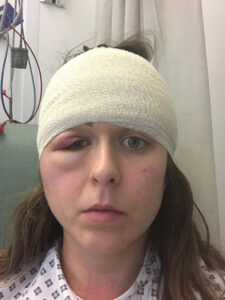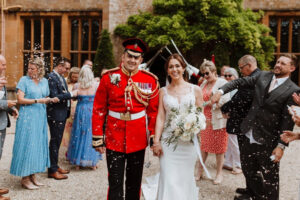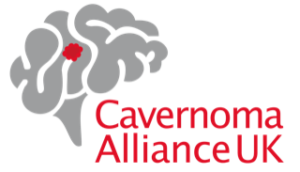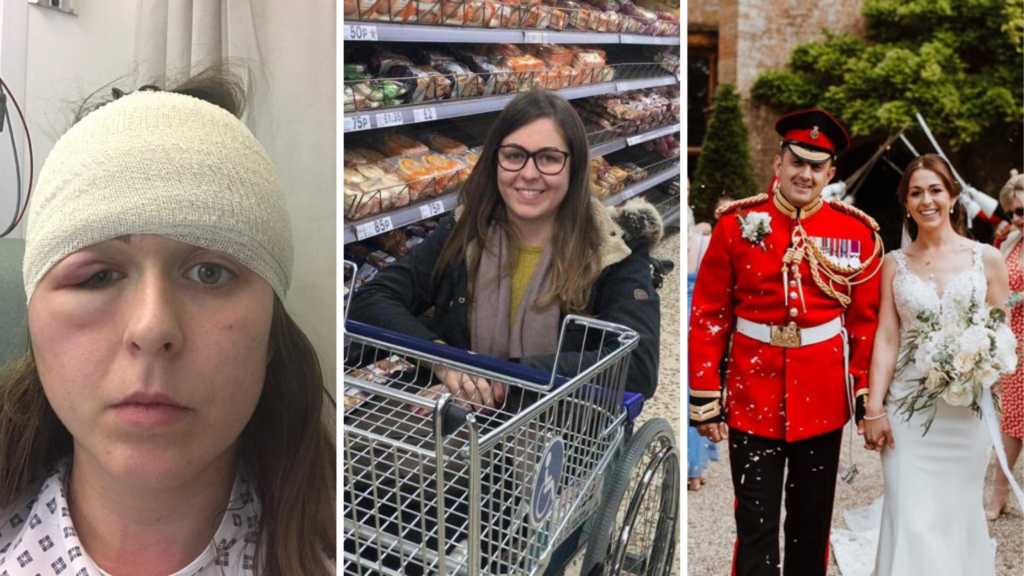Leanne Gray was initially diagnosed with a large cavernoma in her cerebellum which bled causing multiple symptoms. She later discovered that she has the familial (genetic) form of cavernoma and has since grown several more cavernomas all across her brain. Leanne tells her story of how she has learned to cope with her condition and the uncertainties it brings, and live fully and happily at the same time.
October 2018…
Machines and wires everywhere, I was a few hours out of emergency surgery following a cerebellar hemorrhage from a giant 35mm cavernoma I didn’t know I had. The size and location of the bleed caused hydrocephalus distorting the shape of my brain and taking my vision and ability to move. The pain was unbearable. Surgery was incredibly risky, but my situation was life threatening, it was the only option. I wasn’t feeling very positive, I was exhausted and remember talking to my family about donating my organs should the worst become my reality.
Rewind 3 weeks….
I’d woken up early with a terrible headache and was repeatedly violently sick. As I lay on the bathroom floor I knew something wasn’t right. I’d had similar symptoms 17 years earlier and had been diagnosed with Labyrinthitis, I was convinced this was the same condition as last time, albeit the symptoms were much worse. At A&E the diagnosis was confirmed and I was sent away with anti-emetics. The next few days were awful, more sickness, more headaches, unable to move unaided I slept mostly and eventually I began to feel better.
After a few days I was back to feeling exhausted, the nausea had returned alongside a worsening headache, I called my GP who reassured me it took a long time to get over Labyrinthitis. A few days later with slurred speech, sensitivity to light, barely able to move and with a ‘thunderclap’ headache I went to A&E and after some persuasion, I was sent for a CT scan.
My whole world was about to be turned upside down.
The Dr returned to tell me my scan was abnormal; I’d had a large bleed on my brain. 6 minutes later I was in the back of an ambulance, blue lights flashing, on my way to ICU at the regional neuro-centre. Everything seemed so surreal, surely, I couldn’t be conscious and functioning while having a brain haemorrhage!?
Eventually, I was diagnosed with a Cavernoma, I’d never heard of it. I was told that the lesion was large but the bleeding had stopped so I would be monitored and have surgery in 3 months time, everything was going to be ok. I was overjoyed.
Little did I know that things were about to get a whole lot worse.
The next 4 years
This was just the beginning of a very difficult and emotional journey which has dominated every aspect if my life for the almost 4 years. This year, I had EMDR treatment to help with the PTSD that has plagued me all this time. I am now able to talk about this freely, it’s just a memory of a bad time in my life rather than something that consumes every single second of my day.
Rehabilitation was by far the most challenging part, I had to learn how to do everything again, I’d had a huge hemorrhagic stroke, my brain had been squeezed by hydrocephalus, my optic nerves had been damaged, I didn’t even have the strength to move my body and part of my brain was now missing! Everything was overwhelming, exhausting, anxiety provoking and emotional. I spent significant periods sleeping or wondering how I was going to get well again. The simplest tasks would take hours due to the number of rest breaks I needed and I had crippling nausea.
“I’ll always be on a journey”
Overall, I have made a good recovery from surgery, though my life isn’t perfect. I live with a number of deficits from the stroke and have since been diagnosed with linked conditions, including the Krit 1 familial gene. I’ve grown new cavernoma lesions and naturally worry about what my future might look like and how my condition might progress.

I know that I’ll always be on a journey but I’ve found that the best way to cope with that is to accept it and adapt. I don’t try to be who I was before, I’m not her anymore. I can’t change that so I have chosen to own my diagnosis and make life work as best as I can. I accept help, make lists, have reminders on electronic devices and wash my hair less often!
Never give up on you!
My advice to others is – don’t ignore the mental or emotional aspects of your diagnosis. Every time you get knocked down it can be a little harder to come back from. However, it also gives you a little extra resilience – never give up on you! No one cares about you as much as you do; advocate for yourself, go out and get what you deserve and make the most of the life you have, rather than grieving the life that you had before. Time really does heal.
I’m very grateful for my second chance, it’s made me a better version of me, a more appreciative one! With the perspective I’ve gained, I know I owe it to all those who didn’t survive brain hemorrhage to get out there and live my best life in their memory.

